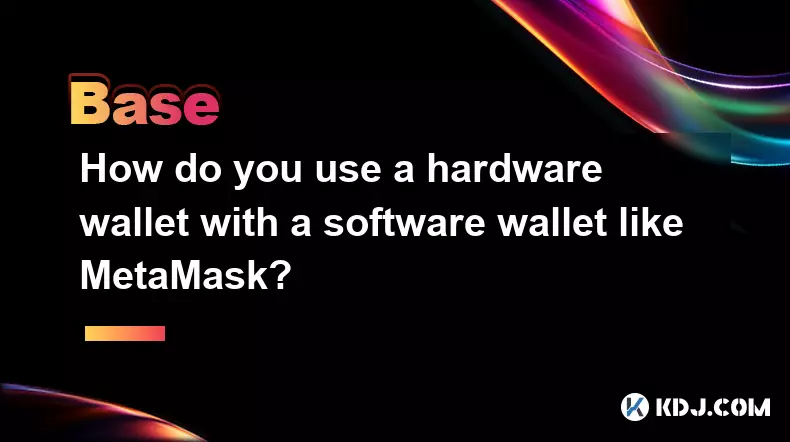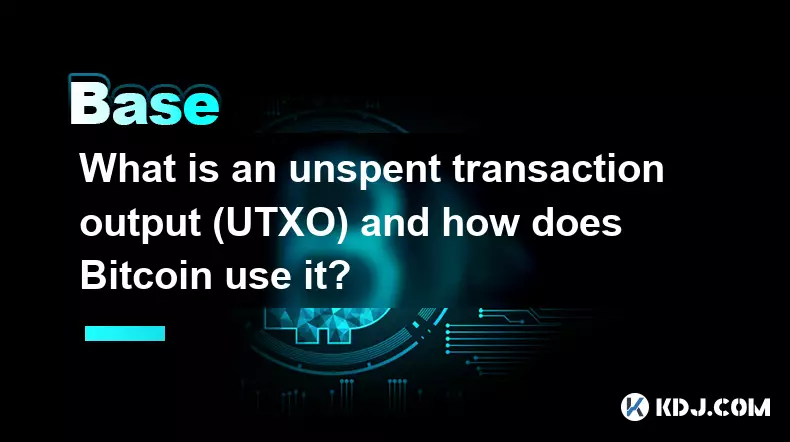-
 bitcoin
bitcoin $103128.103252 USD
-3.33% -
 ethereum
ethereum $3437.127692 USD
-4.86% -
 tether
tether $0.999700 USD
-0.02% -
 xrp
xrp $2.403993 USD
-5.73% -
 bnb
bnb $961.374676 USD
-4.11% -
 solana
solana $154.938665 USD
-8.18% -
 usd-coin
usd-coin $1.000113 USD
0.03% -
 tron
tron $0.298122 USD
0.30% -
 dogecoin
dogecoin $0.172428 USD
-5.76% -
 cardano
cardano $0.557625 USD
-7.13% -
 hyperliquid
hyperliquid $38.740701 USD
-6.51% -
 chainlink
chainlink $15.306051 USD
-7.51% -
 bitcoin-cash
bitcoin-cash $507.558648 USD
-3.26% -
 stellar
stellar $0.281899 USD
-6.74% -
 unus-sed-leo
unus-sed-leo $9.241811 USD
0.57%
How do you use a hardware wallet with a software wallet like MetaMask?
Connect your Ledger or Trezor to MetaMask for secure, offline transaction signing while enjoying seamless access to Ethereum and ERC-20 tokens.
Nov 09, 2025 at 04:20 am

Connecting a Hardware Wallet to MetaMask
1. Ensure your hardware wallet is updated with the latest firmware. Devices like Ledger or Trezor require up-to-date software to maintain compatibility with web3 applications.
2. Install the official browser extension for MetaMask if you haven’t already. Open your browser and navigate to the extensions page of your preferred store, then add MetaMask securely.
3. Plug in your hardware wallet using the provided USB cable. For wireless models, ensure Bluetooth pairing is complete and recognized by your system.
4. Open the Ethereum or ERC-20 compatible app on your hardware device. This step varies slightly between brands—Ledger users typically open the Ethereum app, while Trezor users access their accounts through the Suite interface.
5. In MetaMask, switch to the 'Hardware Wallet' option during account import. Follow the prompts to detect your device. The platform will communicate with the hardware wallet through the browser via WebHID or WebUSB protocols.
Security Advantages of Combining Both Wallet Types
1. Private keys never leave the hardware device, ensuring they remain protected from online threats such as phishing, malware, or keyloggers.
2. Transactions initiated in MetaMask are signed offline within the secure element of the hardware wallet. You must physically confirm each transaction on the device’s screen, adding a layer of user verification.
3. Even if your computer is compromised, attackers cannot extract signing capabilities without physical access to the hardware unit and its PIN or passphrase.
4. Using MetaMask's interface with backend security from a hardware wallet combines usability with institutional-grade protection, ideal for active traders managing large portfolios.
5. Recovery phrases stored on the hardware wallet are isolated from internet-connected environments, reducing exposure to remote exploits targeting seed phrase theft.
Supported Cryptocurrencies and Network Compatibility
1. Most hardware wallets support Ethereum and all ERC-20 tokens by default when connected to MetaMask. This includes popular assets like USDT, UNI, AAVE, and DAI.
2. Additional networks such as Binance Smart Chain, Polygon, Avalanche C-Chain, and Arbitrum can be manually added in MetaMask and still utilize the hardware-signing feature.
3. Some altcoins may require enabling developer modes or installing specific apps on the hardware device before appearing in MetaMask.
4. Always verify that the network parameters (chain ID, gas limits, RPC URLs) match official sources to prevent spoofing attacks when adding custom networks.
5. NFTs held on Ethereum or compatible chains appear automatically in MetaMask once linked, allowing safe browsing and transfer confirmation through the hardware device.
Frequently Asked Questions
Can I use multiple hardware wallets with one MetaMask account?Yes. MetaMask allows switching between different hardware devices during the import process. Each device operates independently, and accounts are derived based on the respective seed phrase and derivation path.
What should I do if MetaMask doesn’t detect my hardware wallet?Try reinstalling the browser extension, updating the device firmware, or testing on another computer. Ensure no conflicting applications like vendor-specific desktop suites are running simultaneously, as they may lock USB access.
Is it safe to connect my hardware wallet on public computers?No. Public machines may contain malicious software designed to intercept communication between MetaMask and the hardware device. Always use trusted, personal devices to avoid compromise.
Do I need to keep my hardware wallet plugged in after setup?You only need to connect it when approving transactions or accessing accounts. Once confirmed, you can safely disconnect it. MetaMask will reconnect upon next use when the device is attached again.
Disclaimer:info@kdj.com
The information provided is not trading advice. kdj.com does not assume any responsibility for any investments made based on the information provided in this article. Cryptocurrencies are highly volatile and it is highly recommended that you invest with caution after thorough research!
If you believe that the content used on this website infringes your copyright, please contact us immediately (info@kdj.com) and we will delete it promptly.
- Ethereum, Altcoins, and Long-Term Gains: Navigating the Crypto Landscape
- 2025-11-12 09:00:00
- Strategy Shares, Bitcoin Retreat, and Market Pain: A NYC Perspective
- 2025-11-12 08:55:01
- Taft, Veterans, and Salutes: A Presidential Honor
- 2025-11-12 09:00:00
- Cryptos, Breakout, and Meme Coins: What's the Haps?
- 2025-11-12 09:40:01
- Altcoin Uprising: Nano, Velodrome, and the Dawn of Practical Crypto
- 2025-11-12 08:40:01
- Dogwifhat (WIF) Price Analysis: Navigating the Breakout Zone
- 2025-11-12 09:20:01
Related knowledge

What is the difference between a transparent and a shielded transaction?
Nov 10,2025 at 05:59pm
Understanding Transparent Transactions in Cryptocurrency1. Transparent transactions are the standard form of transaction on most public blockchains li...

What is a "crypto airdrop farmer" and what strategies do they use?
Nov 09,2025 at 03:39pm
What Is a Crypto Airdrop Farmer?1. A crypto airdrop farmer is an individual who actively participates in blockchain projects to qualify for free token...

What is an unspent transaction output (UTXO) and how does Bitcoin use it?
Nov 12,2025 at 01:40am
Understanding the Concept of Unspent Transaction Output (UTXO)1. An Unspent Transaction Output, commonly referred to as UTXO, is a fundamental compone...

How does a crypto insurance protocol work?
Nov 08,2025 at 12:39am
Understanding Crypto Insurance Protocols1. A crypto insurance protocol operates by offering financial protection against losses incurred from digital ...

What is token composability and why is it called "DeFi Legos"?
Nov 09,2025 at 06:39am
Bitcoin's Role in Decentralized Finance1. Bitcoin remains the cornerstone of decentralized finance, serving as a benchmark for value and trustlessness...

What is an "exploit" versus a "hack" in the context of smart contracts?
Nov 09,2025 at 12:40am
Understanding Exploits in Smart Contracts1. An exploit refers to the utilization of a known vulnerability within a smart contract’s code to gain unint...

What is the difference between a transparent and a shielded transaction?
Nov 10,2025 at 05:59pm
Understanding Transparent Transactions in Cryptocurrency1. Transparent transactions are the standard form of transaction on most public blockchains li...

What is a "crypto airdrop farmer" and what strategies do they use?
Nov 09,2025 at 03:39pm
What Is a Crypto Airdrop Farmer?1. A crypto airdrop farmer is an individual who actively participates in blockchain projects to qualify for free token...

What is an unspent transaction output (UTXO) and how does Bitcoin use it?
Nov 12,2025 at 01:40am
Understanding the Concept of Unspent Transaction Output (UTXO)1. An Unspent Transaction Output, commonly referred to as UTXO, is a fundamental compone...

How does a crypto insurance protocol work?
Nov 08,2025 at 12:39am
Understanding Crypto Insurance Protocols1. A crypto insurance protocol operates by offering financial protection against losses incurred from digital ...

What is token composability and why is it called "DeFi Legos"?
Nov 09,2025 at 06:39am
Bitcoin's Role in Decentralized Finance1. Bitcoin remains the cornerstone of decentralized finance, serving as a benchmark for value and trustlessness...

What is an "exploit" versus a "hack" in the context of smart contracts?
Nov 09,2025 at 12:40am
Understanding Exploits in Smart Contracts1. An exploit refers to the utilization of a known vulnerability within a smart contract’s code to gain unint...
See all articles


























![[4K 60fps] no care by crashpancake2 (1 Coin) [4K 60fps] no care by crashpancake2 (1 Coin)](/uploads/2025/11/12/cryptocurrencies-news/videos/6913a8862890b_image_500_375.webp)














































